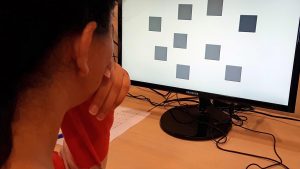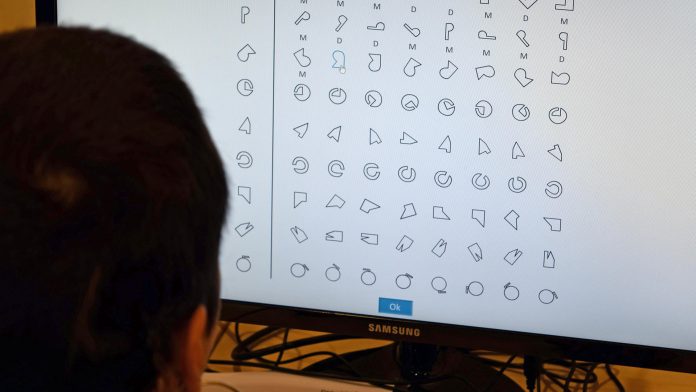Dr Juan Cristóbal Castro-Alonso, an Associate Researcher at Universidad de Chile’s Institute of Education, discusses his work using computer instruments to investigate visuospatial processing and STEM performance
Working memory is our central mind processor for managing new information and integrating it with our previous knowledge. As such, working memory is a central component for learning. It is composed of at least two somewhat independent processors:
- The visuospatial component processes visualisations (e.g., static images, animations, videos) and written text; and
- The auditory component processes narration
Hence, both components are needed to learn through educational materials that show visualisations and narrations, such as computer multimedia modules.
In our laboratory at the Institute of Education, Center for Advanced Research in Education, Universidad de Chile (Santiago, Chile), we are interested in investigating the visuospatial component of working memory and the variables that influence it. Our focus is on the effects of visuospatial processing in multimedia learning, chiefly when the multimedia modules show topics about science, technology, engineering, and mathematics (STEM).
The relationship between visuospatial processing and STEM education
We understand that the relationship between visuospatial processing and STEM education has two directions. One predicts that visuospatial processing can boost STEM learning and competency. There is abundant evidence supporting this prediction by showing the beneficial effects of visuospatial processing on disciplines as diverse as biology, chemistry, physics, medicine, anatomy, surgery, technology, and geometry. A common finding is that visuospatial processing is more important in the earlier rather than the later phases of STEM competency. In other words, the specific disciplinary knowledge eventually becomes more critical than visuospatial processing.
The other direction of the reciprocal relationship between visuospatial processing and STEM education predicts that learning STEM topics and practising with STEM materials will aid in visuospatial processing tasks. There is also plenty of evidence, both correlational and experimental, supporting this prediction. Acquiring knowledge in areas such as biology, chemistry, physics, dentistry, anatomy, veterinary medicine, technology, and maths, has proven to help enhancing visuospatial processing performance.
Visuospatial adaptable resources
Due to this pivotal role of visuospatial processing on STEM learning and proficiency, we have recently developed a battery of computer instruments to measure different aspects of visuospatial processing. The battery, which is called VAR (visuospatial adaptable resources), contains several Internet instruments, including two mental rotation tests, two spatial and two visual working memory tests, and dual visuospatial working memory tasks.
Regarding the two mental rotation instruments, VAR includes a three-dimensional and a two-dimensional tool. The three-dimensional instrument is based on the pen-and-paper Mental Rotations Test, which shows abstract shapes made with connected cubes. The two-dimensional instrument is based on the pen-and-paper Card Rotations Test. The version in VAR includes the standard abstract shapes plus 20 novel images (see Fig. 1). In both mental rotation tests, participants must judge if shapes are the same or different, independently of their rotational angles. Some variables that can be adjusted in these mental rotation instruments include: the rotation and number of shapes to show, their format, and the timing of the tests.
Regarding the two spatial working memory instruments, one is based on the Corsi Block Tapping Test, and the other one follows the n-back paradigm. The Corsi Block Tapping Test included in VAR shows two-dimensional on-screen squares that get highlighted in sequences. The participant must memorise and replicate the sequences (see Fig. 2). The visuospatial n-back test of VAR shows different patterns that must be recognised after some patterns have been shown as interfering blocks. Three common adaptable variables in these spatial working memory tests are: the length of the sequence shown, speed of presentation, and number of sequences per level.
Concerning the two visual working memory instruments in VAR, one is adapted from the Visual Patterns Test. In this case, patterns of filled and blank squares must be replicated from memory. The other visual working memory instrument includes two subtests, the Object Location Memory task, and the Object Identity Memory task. All these tests can be adjusted in variables such as: number of trials per level, size of the visual stimuli, and waiting interval time.
The dual visuospatial working memory tasks of VAR can be set with different combinations of memory and processing stimuli. Variables that can be adjusted in these dual working memory tasks include: time to present the stimuli, inter-stimuli time, number of trials, and starting and ending difficulty levels.
The VAR system also includes an internet administrative tool, with restricted access, which allows administrator users to configure the tests. Some of the changes that can be made are the language of the instructions and the written information (English and Spanish), and the timing of the tasks. Importantly, this administrative tool automatically saves the data of the finished tests, so that this information can be exported to spreadsheets for further analyses. VAR has been employed successfully in different countries and with different research teams.

The modality effect of cognitive load theory
Currently, with our Chilean team, we are investigating university students of non-STEM backgrounds (e.g., literature, language, history). We are studying how the performance of these students attempting different instruments in VAR is related to their learning through different formats of chemistry multimedia. We are particularly interested in the modality effect of cognitive load theory, which predicts that multimedia with subtitles is less effective than multimedia with narrations. We are also interested in testing if the modality effect can be avoided by giving participants a resting time to process the chemistry topics before being tested.
Gender differences
The VAR battery will also help us on our continuous effort of explaining the gender differences in visuospatial processing, which generally show an advantage of males surpassing females. A likely explanation of these differences is sociocultural, as men and boys have more training than women and girls on spatial hobbies, toys, sports, and videogames.
Crucially, these gender differences not only affect visuospatial processing, but every variable related to it. For example, one explanation for the lack of female students in the STEM fields is their lack of confidence in attempting the visuospatial performance that these disciplines require. We recently published a meta-analysis supporting the argument that these gender differences could also influence the performance in female versus male students learning through multimedia about different topics, including STEM.
Drug abuse
We have also added another variable to the relationship between visuospatial processing, gender differences, and achievement in STEM. This variable, which also affects school learning and socialisation, is drug abuse. For example, we recently published a review describing the detrimental effects of regularly smoking cannabis on teenage school students. We reported that the negative effects of smoking marijuana could be observed in non-dependent students, for example, young learners that smoked with a frequency of fewer than five cannabis cigarettes per week.
These and further investigations employing the VAR battery of computerised visuospatial instruments will ideally provide us with a better picture of the complex relationship between visuospatial processing, gender differences, and multimedia learning about STEM. Our goal is to help find solutions to the female under-representation in the most promissory fields for our future professionals: STEM.
Juan Cristóbal Castro-Alonso
Associate Researcher
Institute of Education
Center for Advanced Research in Education, Universidad de Chile
+56 2 2978 1238
jccastro@ciae.uchile.cl
Tweet @DrCrisCastro
http://drcriscastro.com
Please note, this article will also appear in the fourth edition of our new quarterly publication.







